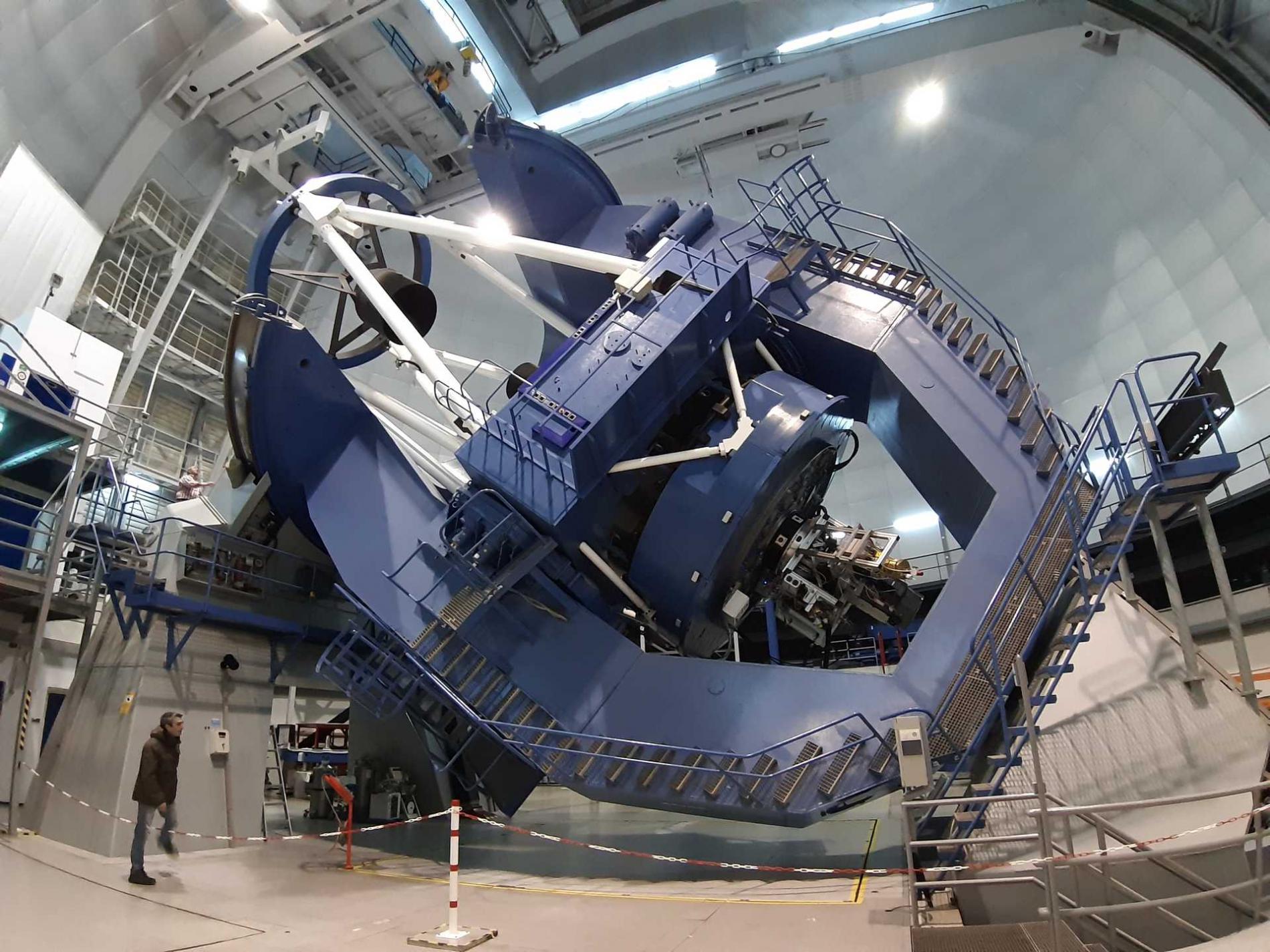CARMENES instrument finds two new planetary systems formed by Earths and super-Earths
The Institute of Astrophysics of Andalusia (IAA-CSIC) leads the detection of what, according to the data, is the most common type of planetary systems around dwarf stars, the most common in the Milky Way
The era of the detection of planets outside our Solar System, which began less than three decades ago, has so far yielded more than four thousand detected planets. Their astonishing variety has shown that the structure of our Solar System, with rocky planets in the inner regions and gaseous icy planets in the outer regions, is not as typical as previously thought, and that other configurations appear more common, such as gas giant planets very close to their stars or systems with several super-Earths around dwarf stars. In this context, a new detection of two planetary systems by the CARMENES instrument, operating at Calar Alto Observatory (CAHA, Almería), reinforces the idea that dwarf stars tend to harbour rocky planets.

"Our current understanding of the formation of low-mass planets in orbits very close to small stars suggests that they are very abundant, with an average of at least one planet per star. Despite this abundance, we hardly have any data on the density of these planets that would allow us to deduce their composition," says Pedro J. Amado, a researcher at the Institute of Astrophysics of Andalusia (IAA-CSIC) who heads the study.
In our Solar System, Earth, Mars, Mercury and Venus are categorised as terrestrial or rocky planets. For extrasolar planets, those between half and twice the size of Earth are considered to be terrestrial, while those up to ten times the mass of Earth are classified as super-Earths, terms that have no implications for surface conditions or habitability. In fact, while the composition of Earth-like exoplanets may be similar to that of the rocky planets in the Solar System, the composition of super-Earths may also include other combinations of gas, rock, ice or water.
The newly detected systems are found around the red dwarf (or M-dwarf) stars G 264-012 and Gl 393. Two planets with a minimum mass of 2.5 and 3.8 times that of the Earth have been found around the former, orbiting their star every 2.3 and 8.1 days. The planet in Gl 393 has a minimum mass of 1.7 Earth masses and orbits its star every seven days. All three planets fall into the category of hot earths and super-earths, and reach temperatures that preclude the presence of liquid water on the surface.
"To understand how the different planetary systems we are observing form and evolve, we need robust statistics on the number of planets that exist, as well as information on the architecture of the systems and the density of the planets. This will allow us to explain those that do not fit the known mechanisms, such as the GJ 3512 system that we also found with CARMENES, which has a giant planet around a dwarf star, or to confirm the tendency of dwarf stars to host multiple systems," says Pedro J. Amado (IAA-CSIC).
In this sense, this work has also made it possible to detect a new factor that seems to influence the detections, since the planet around the star Gl 393 had gone unnoticed in previous campaigns with highly efficient planet-hunting instruments. Red dwarf stars show intense activity in the form of flares that can mask the signal from potential planets, and the research team noted that the non-detection of Gl 393's planet could be due to the fact that previous observations were carried out during a peak of activity. They concluded that planets can most easily be detected in dwarf stars with moderate activity or outside the peaks of the star's activity cycle.
"The CARMENES work is focused on extending the available data to compose a global picture of the planetary systems. The three planets in these two systems are among the smallest in mass, and therefore in the amplitude of the radial velocity they instill in their stars, which accounts for the quality of the instrument," concludes Pedro J. Amado (IAA-CSIC).
P. J. Amado et al. "The CARMENES search for exoplanets around M dwarfs. Two terrestrial planets orbiting G264-012 and one terrestrial planet orbiting Gl393". Astronomy & Astrophysics, https://doi.org/10.1051/0004-6361/202140633, June 2021
Instituto de Astrofísica de Andalucía (IAA-CSIC)
Unidad de Divulgación y Comunicación
Silbia López de Lacalle - sll[arroba]iaa.es - 958230676
https://www.iaa.csic.es
https://divulgacion.iaa.csic.es

